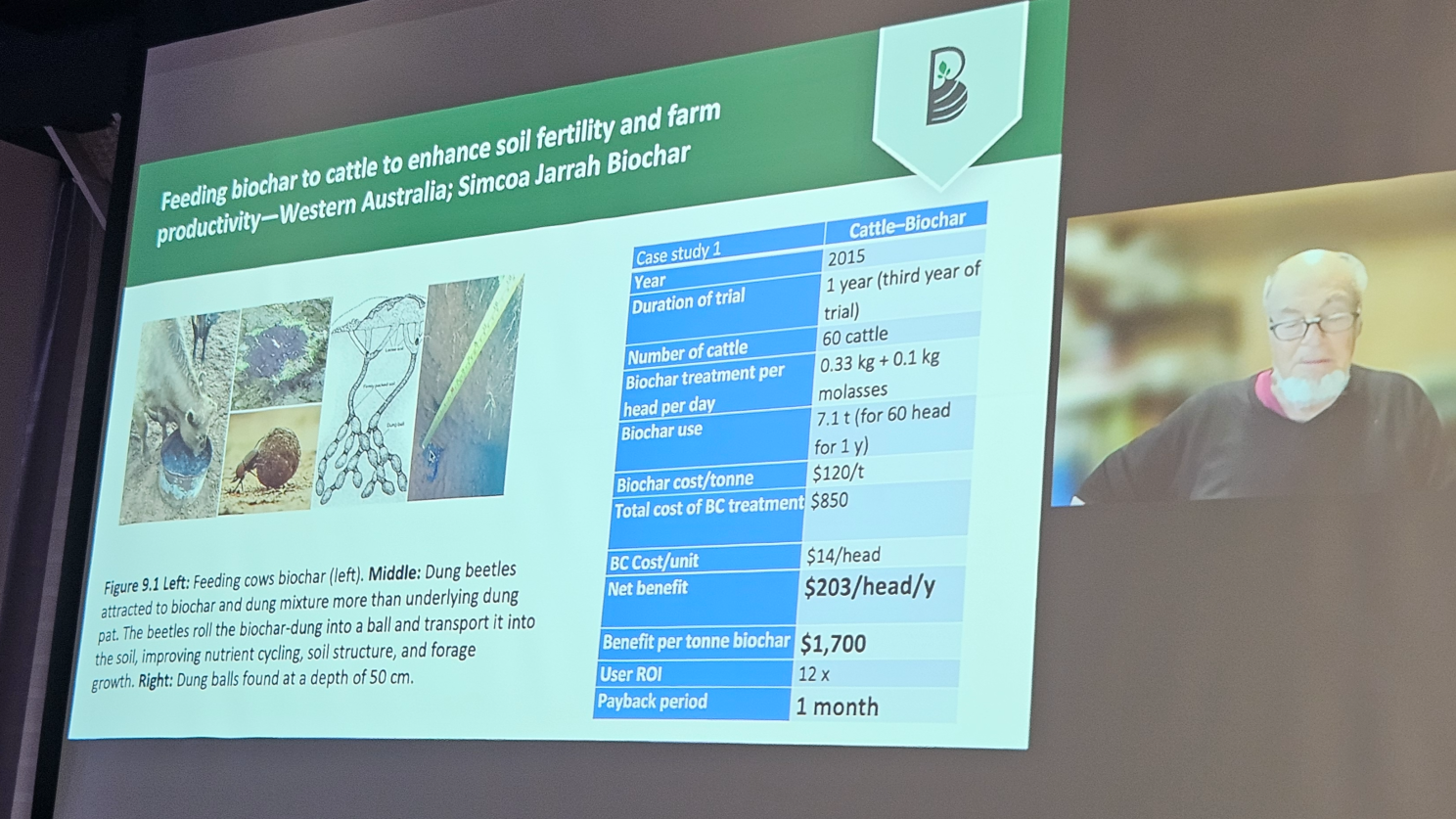The 2025 Global Biochar Exchange in Nagoya was an eye-opener. Representing Bhetochar, I went in expecting to deepen my knowledge of biochar’s incredible benefits for soil health. What I didn’t expect were presentations that would completely shift my perspective on the applications of this amazing material.
In a fascinating talk by Stephen Joseph, I learned about a frontier for biochar that I had never seriously considered: its use as an animal feed supplement. For years, my focus has been very much grounded. This presentation lifted my gaze to the animals that graze upon it.
The session, “Commercialisation of Biochar,” detailed several areas where biochar is driving profitability, but the case study on animal feed was the true revelation.

Photograph by Yuventius Nicky, “Stephen Joseph’s Presentation” 2025
Feeding Biochar to Cattle
What captured my attention was a specific trial in Western Australia involving feeding biochar to cattle. The results were stunning:
- The Mix: Each head of cattle was fed a daily supplement of 0.33 kg of biochar mixed with 0.1 kg of molasses.
- The Cost: The biochar cost was $120 per tonne, amounting to just $14 per head for the treatment.
- The Return: The trial reported a staggering net benefit of $203 per head per year. This translated to a 12x return on investment with a payback period of only one month.
But the benefits didn’t stop at the animal’s digestion. The presentation showed how dung beetles were more attracted to the biochar-dung mixture, actively rolling it into balls and transporting it deep into the soil—in some cases, up to 50 cm deep! This process directly improves soil structure, nutrient cycling, and forage growth.
This creates a powerful, full-circle system: the biochar improves animal health and feed efficiency, and then gets delivered deep into the soil by nature’s own tillers, enhancing long-term pasture fertility.
Expanding the Horizon
While the animal feed application was my main takeaway, the presentation also reinforced biochar’s versatility in other high-value sectors, including:
- Increasing fruit yield in avocado orchards by applying biochar with NPK fertigation.
- Boosting harvests for zucchini and coffee through targeted application rates.
- Creating advanced biochar-mineral complexes that can improve wheat yields by 30% when replacing conventional minerals like gypsum.
 For us at Bhetochar, this is more than just interesting data. It’s a call to broaden our conversations and explore new markets. We are on the cusp of realizing biochar’s potential not just as a soil amendment, but as a holistic tool for regenerative agriculture that impacts everything from animal wellness to enterprise profitability and carbon sequestration.
For us at Bhetochar, this is more than just interesting data. It’s a call to broaden our conversations and explore new markets. We are on the cusp of realizing biochar’s potential not just as a soil amendment, but as a holistic tool for regenerative agriculture that impacts everything from animal wellness to enterprise profitability and carbon sequestration.
It’s a powerful reminder to stay curious. I went to Japan to talk about soil and left thinking about the entire farm ecosystem.


